How to Translate GIFs Easily and Effectively
GIFs, or Graphics Interchange Format files, are animated visuals widely used for communication in social media, marketing, and education. Their ability to convey messages quickly and humorously makes them a staple in digital interactions. However, the embedded text in GIFs often limits accessibility, especially when it's in an unfamiliar language. Translating GIFs bridges this gap, making them comprehensible to a global audience. This guide provides easy-to-follow steps to translate GIF using tools like PDNob AI Image Translator and GIF Google Translate, catering to diverse needs and ensuring seamless communication across languages.
- Part 1: Steps to Translate GIF Using PDNob Image Translator
- Part 2: Steps to Translate GIF Using Google Translate
- Part 3: FAQs and Conclusion
Part 1: Steps to Translate GIF Using PDNob Image Translator
PDNob Image Translator is a powerful and versatile tool crafted to simplify the translation process for images and GIFs. Equipped with cutting-edge OCR (Optical Character Recognition) technology, it ensures accurate detection and translation of text, even in complex or stylized fonts. Its intuitive user interface makes it accessible for both professionals and casual users, streamlining the task of extracting and converting text from visuals. In addition to its precision, the tool supports multiple languages, catering to diverse global needs.
- Download and Install PDNob Image Translator
- Upload the GIF File
- Highlight the Text
- Choose the Output Language
- Save or Export the Translated GIF
Visit the official PDNob Free AI Image Translator website to download the software. Complete the installation process on your device by following the on-screen instructions.
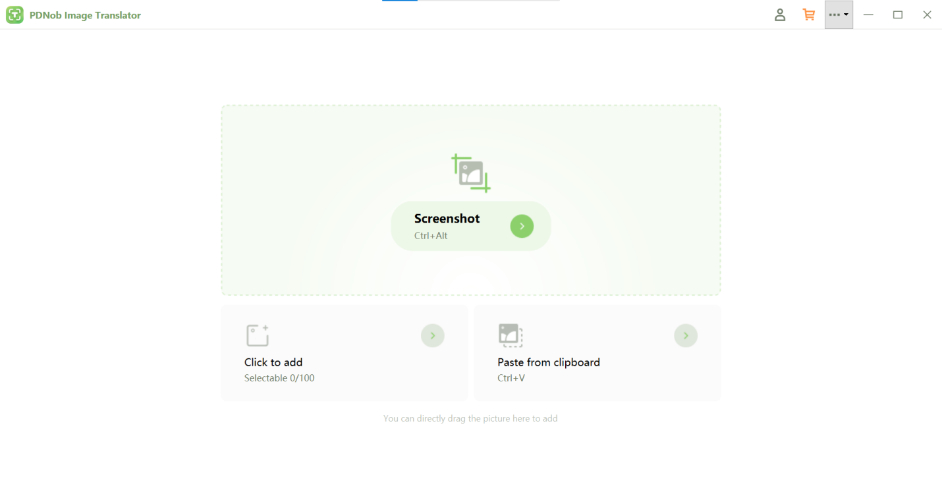
Open the software and upload the GIF you want to translate. Drag-and-drop functionality makes this step quick and easy.
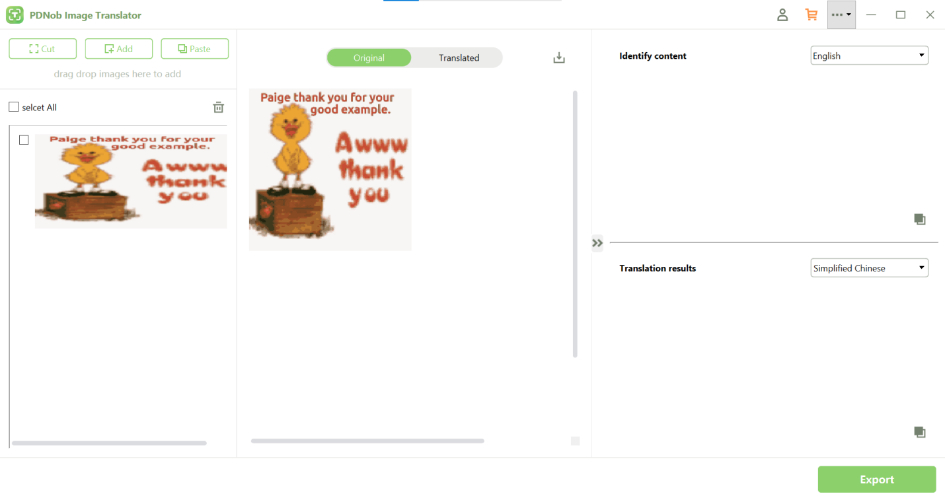
Use the tool’s selection features to highlight the text sections within the GIF frames. The OCR function will automatically detect and extract the text.
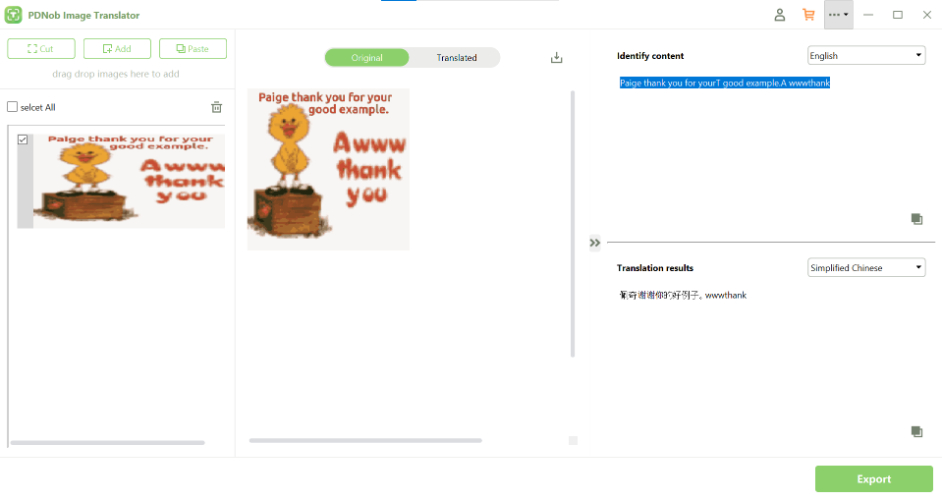
Select the desired output language from the list of supported options. The tool will translate the extracted text into your chosen language, and you can preview the results.
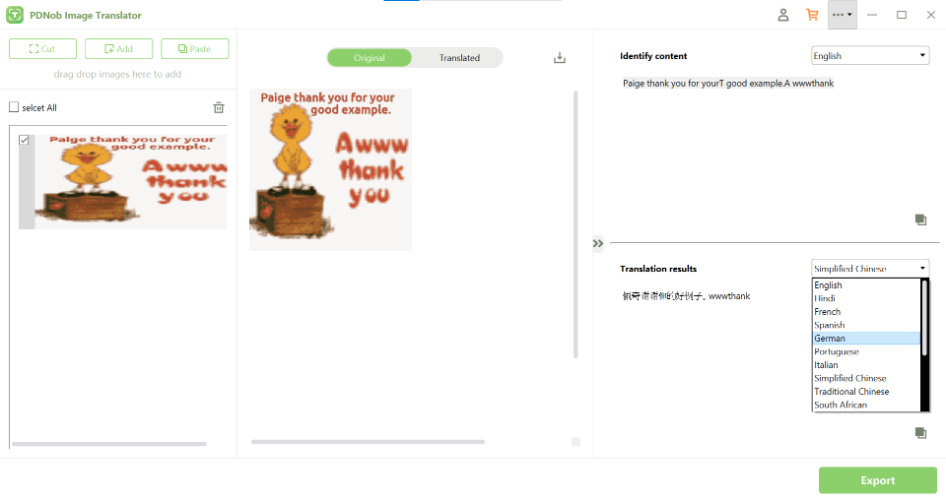
Save the newly translated GIF to your device or export it for immediate use. PDNob Image Translator also allows batch processing, letting you translate multiple GIFs simultaneously to save time.
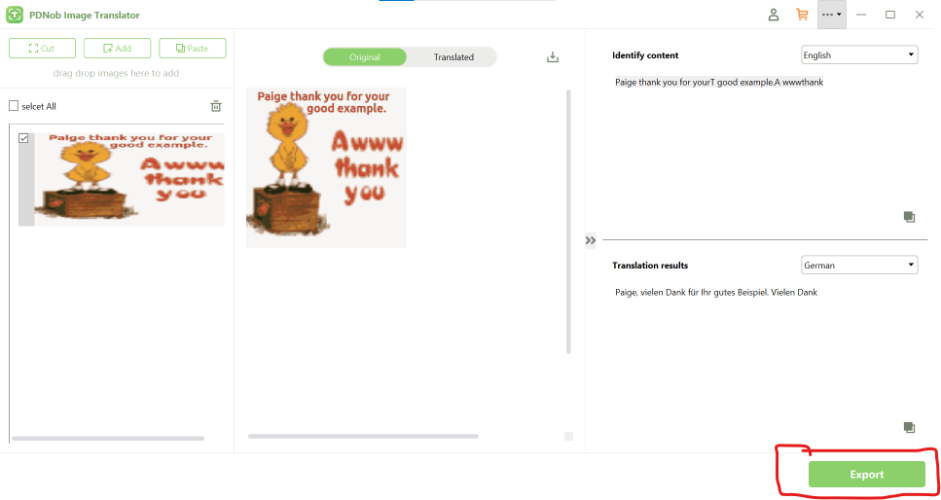
Additional Features of PDNob Image Translator
- Batch Processing: Translate multiple GIFs or images simultaneously, saving time and effort.
- Multi-Language Support: Offers translations in a wide range of languages to cater to global audiences.
- High-Quality OCR Technology: Accurately detects and processes text, including stylized and handwritten fonts.
- Cross-Platform Compatibility: Available for use on both Windows and Mac systems, ensuring versatility.
- Secure and Offline Mode: Allows users to translate files securely without needing an internet connection, protecting sensitive data.
Part 2: Steps to Translate GIF Using Google Translate
Google Translate is a widely used, free language tool that offers translation services for text, documents, and images across a vast array of languages. Although it is not specifically designed for translating GIFs, it can still be leveraged for this purpose by processing individual frames. Users can extract the frames from a GIF, upload them to Google Translate image translation feature, and receive translations for the text embedded within. While this approach requires additional steps, it provides a flexible, no-cost solution for those looking to translate GIFs in a pinch. Steps to Use Google Translate for GIF Translation.
- Extract GIF Frames
- Upload Each Frame to Google Translate
- Manually Copy and Translate Text
- Replace Text on Each Frame
- Reassemble the GIF
First, you need to extract each frame from the GIF using a third-party tool or GIF editor (like Photoshop or an online GIF splitter). This can be time-consuming, especially for longer GIFs with many frames.
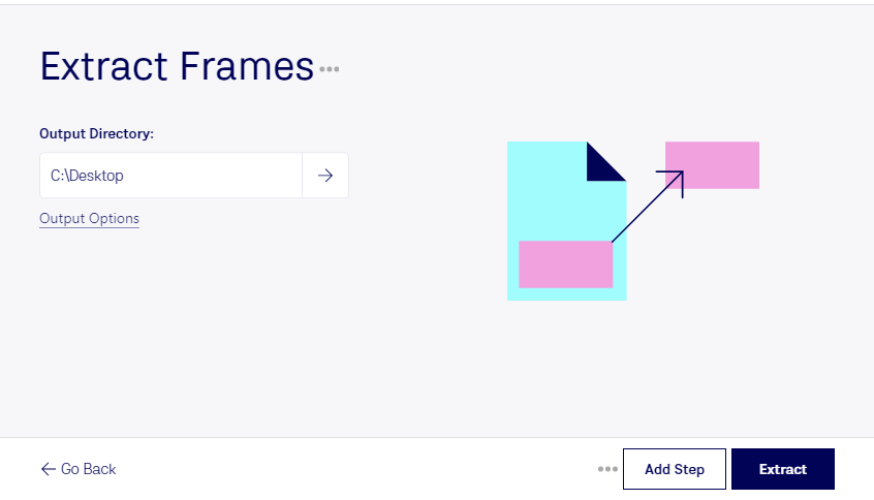
After extracting the frames, go to Google Translate GIF translation feature. You'll have to upload each frame individually—one at a time—since Google Translate doesn't support GIF files as a whole.
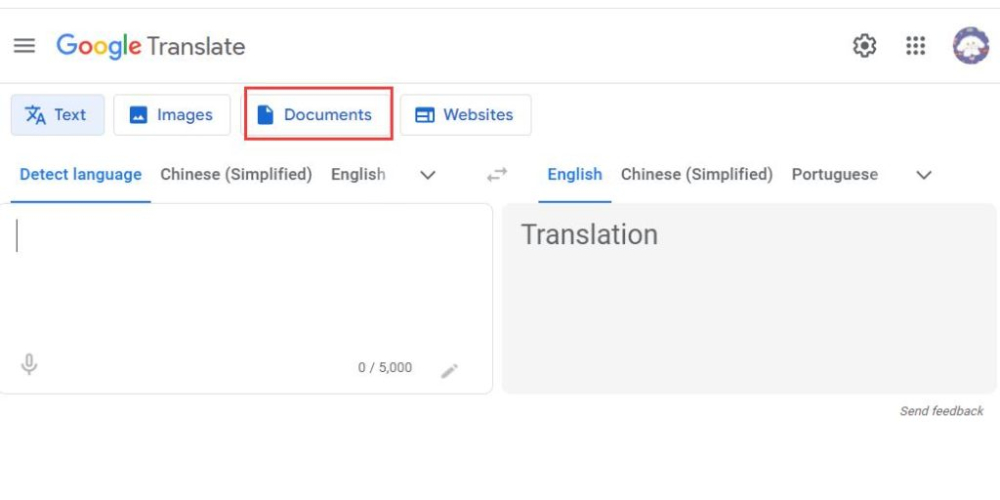
Once each frame is uploaded, Google Translate will attempt to recognize and GIF translate to English text. However, the tool might struggle with stylized or complex fonts, leading to potential errors. You’ll need to manually copy and save each translation for every frame.
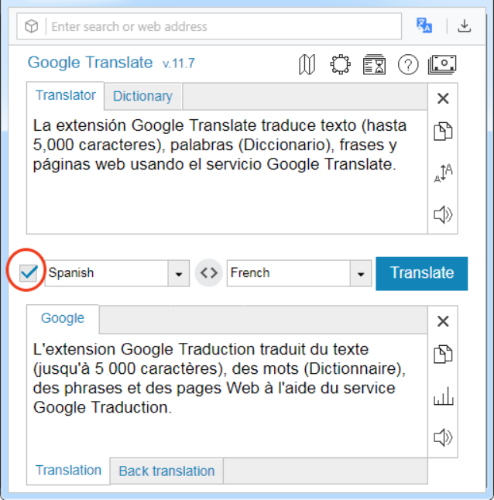
After translating the text, you'll need to manually replace the original text with the translated text using an image editor, which can be tedious, especially if there’s a lot of text in the GIF.
After editing all the frames, use a GIF editor to reassemble the individual frames back into a single GIF. This step can be tricky if you need to adjust the timing or sequence of the frames to match the original animation.
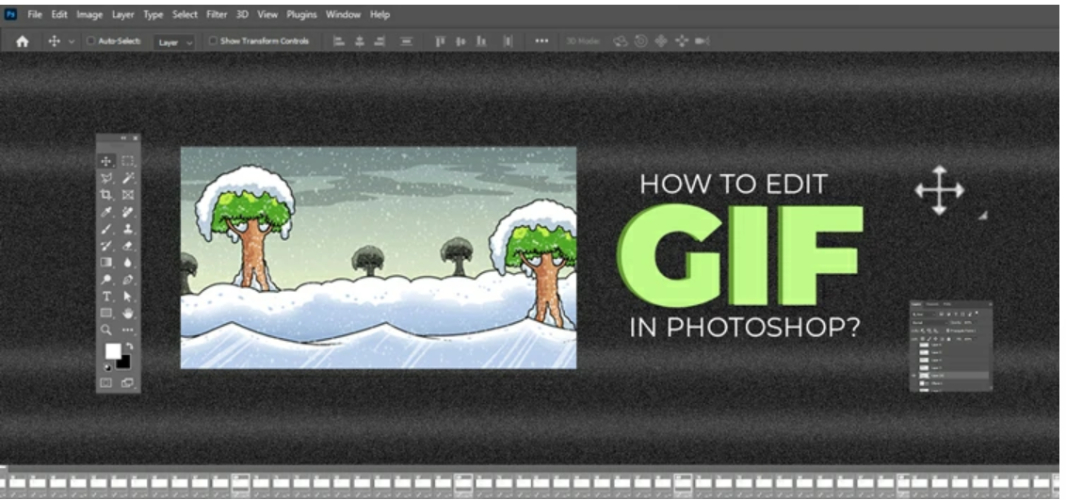
These steps highlight why using Google Translate for GIF translation is a complex and cumbersome process that requires multiple tools, patience, and manual effort.
Limitations of Google Translate for GIF Translation
- Manual Frame Extraction: Google Translate cannot process GIFs directly, requiring users to extract individual frames using a separate editor, which is time-consuming.
- Limited Accuracy with Complex Text: The tool struggles with stylized, handwritten, or complex backgrounds, leading to inaccuracies or partial text recognition.
- No Batch Processing Capability: Google Translate requires uploading each frame individually, making it inefficient for translating multiple GIFs or frames at once.
- Tedious Reassembly Process: After translating the text in each frame, users must manually replace the original text and reassemble the GIF, adding extra steps.
- Inability to Handle Animated Text: Moving or changing text in a GIF cannot be translated effectively, forcing users to freeze frames and lose the dynamic nature of the animation.
Part 3:FAQs and Conclusion
1.What Is GIF Translation?
GIF translation refers to the process of extracting and translating text embedded in the frames of a GIF. This task is primarily accomplished using Optical Character Recognition (OCR) technology, which identifies and digitizes text from images or animations. Once the text is extracted, it can be translated into any desired language. GIF translation plays a pivotal role in creating accessible and culturally relevant content. Businesses, educators, and content creators often rely on this process to expand their reach, connect with diverse audiences, and ensure their messages are universally understood.
2.Why Translate GIFs?
GIFs are a universal mode of expression, but their textual content often poses language challenges. Translating this text ensures that everyone, regardless of linguistic background, can engage with the intended message. For brands and creators, translating GIFs enables them to resonate with global audiences. It turns regional campaigns into international successes by tailoring messages to diverse cultures and languages.
3.Uses of GIF Translation
- Translating Educational GIFs: Helps in adapting educational content for global classrooms, making it accessible to students in different languages.
- Localizing Marketing Materials: Brands can GIF translate used in marketing campaigns to reach a wider, international audience and ensure the message is culturally relevant.
- Personalizing Meme Content: Memes are widely shared across different cultures; translating them ensures they resonate with multilingual audiences.
- Improving Social Media Engagement: Brands and content creators can connect with a more diverse audience by translating GIFs used in social media posts.
- Enhancing Cross-Cultural Communication: Translating GIFs allows for clearer communication between people from different linguistic backgrounds, bridging cultural gaps.
4.Conclusion
Translating GIFs can significantly improve accessibility, engagement, and communication across cultures. PDNob AI Image Translator stands out for its user-friendly interface, high-accuracy OCR, and advanced features like batch processing, making it the ideal choice for professionals. Conversely, Google Translate, while free and easy to use, requires a manual and time-consuming process for GIF translation and offers limited accuracy with complex text. For seamless and professional results, PDNob Image Translator is highly recommended. Meanwhile, casual users can explore Google Translate for simple, one-off tasks. By leveraging these tools effectively, you can make your GIFs truly universal.
Speak Your Mind
Leave a Comment
Create your review for Tenorshare articles
 PDNob Image Translator
PDNob Image Translator
Instantly translate various types of images to text.






